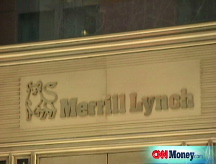181,000 troubled homeowners get help
Mortgage industry coalition Hope Now says it helped a record number of homeowners last month, but 82,000 homes were still lost to foreclosure.
| 30 yr fixed | 3.80% |
| 15 yr fixed | 3.20% |
| 5/1 ARM | 3.84% |
| 30 yr refi | 3.82% |
| 15 yr refi | 3.20% |
NEW YORK (CNNMoney.com) -- A record number of American homeowners are seeking - and getting - help to solve their mortgage woes.
More than 76,000 at-risk mortgage borrowers had their loans permanently modified in June to make them more affordable, with lower interest rates, reduced principal or both, according to the Hope Now coalition of mortgage lenders, servicers, investors and community advocacy groups. That's up about 9% from May and 26% from January.
Another 105,000 homeowners were given repayment plans, which means that they'll have extra time to make up missed payments. Repayment plans, which don't reduce a borrower's debt load and are generally considered to be less effective at helping homeowners, made up about 58% of all the mortgage work outs in June.
"The industry continues to accelerate the pace at which it is helping homeowners and expects this positive trend to continue," said Hope Now's Executive Director Faith Schwartz.
Hope Now says it has helped a total of 1.9 million homeowners since its program launched in July, 2007.
But all this has still failed to stem the rising foreclosure tide. The coalition reported that more than 82,039 people lost their homes to foreclosure during the month, up 12% from May. This flood of vacant homes on the market is pushing prices down further. On Tuesday, the S&P/Case-Shiller 20-city Home Price Index showed that in May home prices dropped a record 15.8% from a year ago.
And industry critics are still calling for greater clarity and detail in the way Hope Now reports mortgage workouts. The biggest complaint is that there is no detail in the numbers. Schwartz said in a call with reporters on Wednesday that she did not know which type of mortgage modification was most common.
Better reporting of mortgage workouts could help speed any housing market recovery, according to Jim Carr, chief operating officer of the National Community Reinvestment Coalition, an advocacy group whose members do foreclosure counseling.
That would help prognosticators forecast future defaults better, which influence home prices and other market trends. Right now, experts are still in the dark on the exact nature of the work outs.
"Of the 1.9 million borrowers Hope Now has claimed to help, how many are short-term approaches that will [default again] over the next few years?" he asked.
What the market needs, according to Carr, is much more clarity and certainty in the Hope Now numbers, so the market can better understand where it is and where it is heading.
The Hope Now report was released just hours after President Bush signed the massive housing rescue bill, which allocates $300 billion to help at-risk borrowers refinance their unaffordable old mortgages into new low-cost fixed-rate loans insured by the Federal Housing Administration.
That will give Hope Now's 26 members another means to help homeowners. Under the bill, lenders and servicers must voluntarily lower borrower's mortgage balances to 90% of current market value, and pay the FHA a fee equal to 3% of the new principal.
Kathleen Day, a spokeswoman for the Center for Responsible Lending, said she welcomes the housing rescue bill as a step in the right direction but she thinks more is needed. "Credit Suisse is reporting that there will be 6.5 million foreclosures over the next few years," she said.
Hope Now also reported the results of a survey of its members about the extent of the industry's exposure to subprime ARM resets.
It found that about 928,000 of these loans had been scheduled for reset during the first half of 2008. Of that total, some 382,000, or 41%, have been refinanced, while 57,000, or 6% of them, have been modified and given more favorable loan terms. Less than 1% of these borrowers who were current with their payments when their loan reset went into default.
Hope Now recently introduced a number of revised policies in order to help more delinquent borrowers stay in their homes.
It has pledged faster response times to borrowers seeking work outs. That means its members will acknowledge work out requests within five days, keep borrowers informed on the status of the work outs and give them either an approval or denial, within 45 days.
Hope Now has also stepped up its outreach efforts, making sure at-risk borrowers are aware of work out options. Its members are sending letters to subprime adjustable rate mortgage (ARM) borrowers 120 days before their loans reset warning them that their payments will go up soon, and offering credit counseling.
According to Jonathan Kempner, CEO of the Mortgage Bankers Association, Hope Now members in partnership with foreclosure prevention counselors and community advocacy groups have sent out 1.8 million letters to at-risk borrowers, offering help in restructuring their loans.
Normally, borrowers can be very hesitant to respond to servicers, ignoring their calls and tossing aside their letters. By partnering with community groups, the servicers have gotten much better response rates.
"More than 18% of the targeted borrowers have contacted their servicers, about six times more than usual," said Kempner.
Additionally, the coalition has teamed with community groups to participate in 14 massive foreclosure prevention workshops around the country, which put borrowers together with credit counselors and lenders to quickly reach workable solutions to mortgage payment problems. ![]()



